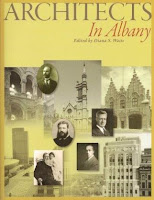 The annual Hendricks Manuscript Award application is due March 15. This award is given to the best published or unpublished book-length manuscript relating to any aspect of the Dutch colonial experience in North America. This Award, endowed by Dr. Andrew A. Hendricks, carries a prize of $5,000 and a framed Len Tantillo print with a brass name plate.
The annual Hendricks Manuscript Award application is due March 15. This award is given to the best published or unpublished book-length manuscript relating to any aspect of the Dutch colonial experience in North America. This Award, endowed by Dr. Andrew A. Hendricks, carries a prize of $5,000 and a framed Len Tantillo print with a brass name plate.
Entries must be based on research completed or published within two years prior to first submission. Manuscripts may deal with any aspect of New Netherland history. Biographies of individuals whose careers illuminate aspects of the history of New Netherland are eligible, as are manuscripts dealing with such cultural matters as literature and the arts, provided that in such cases the methodology is historical.
Edited collections of articles that meet the above criteria are eligible- however, works of fiction and works of article length are not eligible. The successful entry should be well written, adequately researched and documented, demonstrate thorough knowledge of primary sources, follow accepted scholarly standards, and contribute to the scholarship in the field.
Three clear, readable photocopies of the manuscript must be submitted on or before March 15 , with a letter of intent to enter the contest. The prize-winner, chosen by a five-member panel of scholars, is selected in May or June. The prize is given at an awards ceremony in conjunction with the annual Rensselaerswijck Seminar, held in September. Reasonable travel expenses will be reimbursed.
Address entries to Hendricks Manuscript Award Committee
New Netherland Institute
P.O. Box 2536, ESP Station
Albany, NY 12220-0536
Previous Hendricks Award Winners:
1987 Oliver A. Rink, Holland on the Hudson: An Economic and Social History of Dutch New York (Cornell University Press, 1986).
1988 Thomas E. Burke, Jr., “The Extremest Part of All: The Dutch Community of Schenectady, New York, 1661-1710 (Ph.D. dissertation State University of New York at Albany, 1984). Published as Mohawk Frontier: The Dutch Community of Schenectady, New York, 1661-1720 (Cornell University Press, 1992).
1989 Firth H. Fabend, A Dutch Family in the Middle Colonies, 1660-1800 (Rutgers University Press, 1991).
1990 David William Voorhees, “‘-In Behalf of the true Protestants religion’: The Glorious Revolution in New York” (Ph.D. dissertation, New York University, 1988).
1991 Joyce Goodfriend, Before the Melting Pot: Society and Culture in Colonial New York City, 1664-1730 (Princeton University Press, 1992).
1992 David E. Narrett, Inheritance and Family Life in Colonial New York City(Cornell University Press, 1992).
1993 David S. Cohen, The Dutch-American Farm (New York University Press, 1992).
1994 Martha Dickinson Shattuck, “A Civil Society: Court and Community in Beverwijck, New Netherland, 1652-1664″- (Ph. D. dissertation, Boston University, 1993).
1995 Willem F. Eric Nooter, “Between Heaven and Earth: Church and Society in Pre-Revolutionary Flatbush, Long Island” (Ph.D. dissertation, Vrije Universiteit, Amsterdam, Netherlands, 1995).
1996 Dennis J. Maika, “Commerce and Community: Manhattan Merchants in the Seventeenth Century” (Ph.D. dissertation, New York University, 1995).
1997 Dennis C. Sullivan, “The Punishment of Crime in Colonial New York: The Dutch Experience in Albany during the Seventeenth Century” (Ph.D. dissertation, State University of New York at Albany, 1995).
1998 Paul A. Otto, “New Netherland Frontier: Europeans and Native Americans along the Lower Hudson River, 1524-1664″- (Ph.D. dissertation, Indiana University, 1994).
1999 J. A. Jacobs, “Nieuw-Nederland: het tere begin van een pas ontluikend land” (Ph.D. dissertation, Leiden University, 1999).
2000 Cynthia Van Zandt, “Negotiating Settlement: Colonialism, Cultural Exchange and Conflict in Early Colonial Atlantic North America, 1580-1660″- (Ph.D. dissertation, University of Connecticut, 2000).
2001 Adriana Van Zwieten, “A Little Land to Sow Some Seeds” (Ph. D. dissertation, Temple University, Philadelphia, 2001).
2002 No recipient
2003 Benjamin Schmidt, Innocence Abroad: the Dutch Imagination and the New World, 1570- 1670, Cambridge University Press, 2001
2004 Simon Middleton, Privilege and Profits: Tradesmen in Colonial New York, 1624-1750, University of Pennsylvania Press (Expected date of publication: 2006)
2005 Mark Meuwese, “For the Peace and Well-Being of the Country: Intercultural Mediators and Indian-Dutch Relations in New Netherland and Dutch Brazil (1600-1664),” (Ph.D. dissertation. University of Notre Dame, 2005).
2006 No recipient
2007 1) Jeroen van den Hurk, “Imagining New Netherland: Origins and Survival of Netherlandic Architecture in Old New York, 1614-1776″- (Ph.D. dissertation, University of Delaware, 2006).
2007 2) Kees Jan Waterman”‘-To Do Justice to Him and Myself’: Evert Wendel’s Account Book of the Fur Trade with Indians in Albany, New York, 1695-1726,” (ms. to be published by the American Philosophical Society.)
2008 W. Th. M. Frijhoff, Fulfilling God’s Mission: The Two Worlds of Dominie Everardus Bogardus, 1607-1647, Myra Heerspink Scholz, trans. (Leiden: Brill, 2007).
2009 James Bradley, Before Albany: An Archeology of Native-Dutch Relations in the Capital Region, 1600-1664 (Albany: New York State Museum Bulletin 509, 2007).
 Every once in a while a book shows up that I know will have a permanent place on my desk-side bookshelf. Architects in Albany, a new book by the Historic Albany Foundation and Mount Ida Press, is a collection of profiles and images of the work of 36 designers and their firms that played a major part in forming Albany’s architectural heritage.
Every once in a while a book shows up that I know will have a permanent place on my desk-side bookshelf. Architects in Albany, a new book by the Historic Albany Foundation and Mount Ida Press, is a collection of profiles and images of the work of 36 designers and their firms that played a major part in forming Albany’s architectural heritage.







